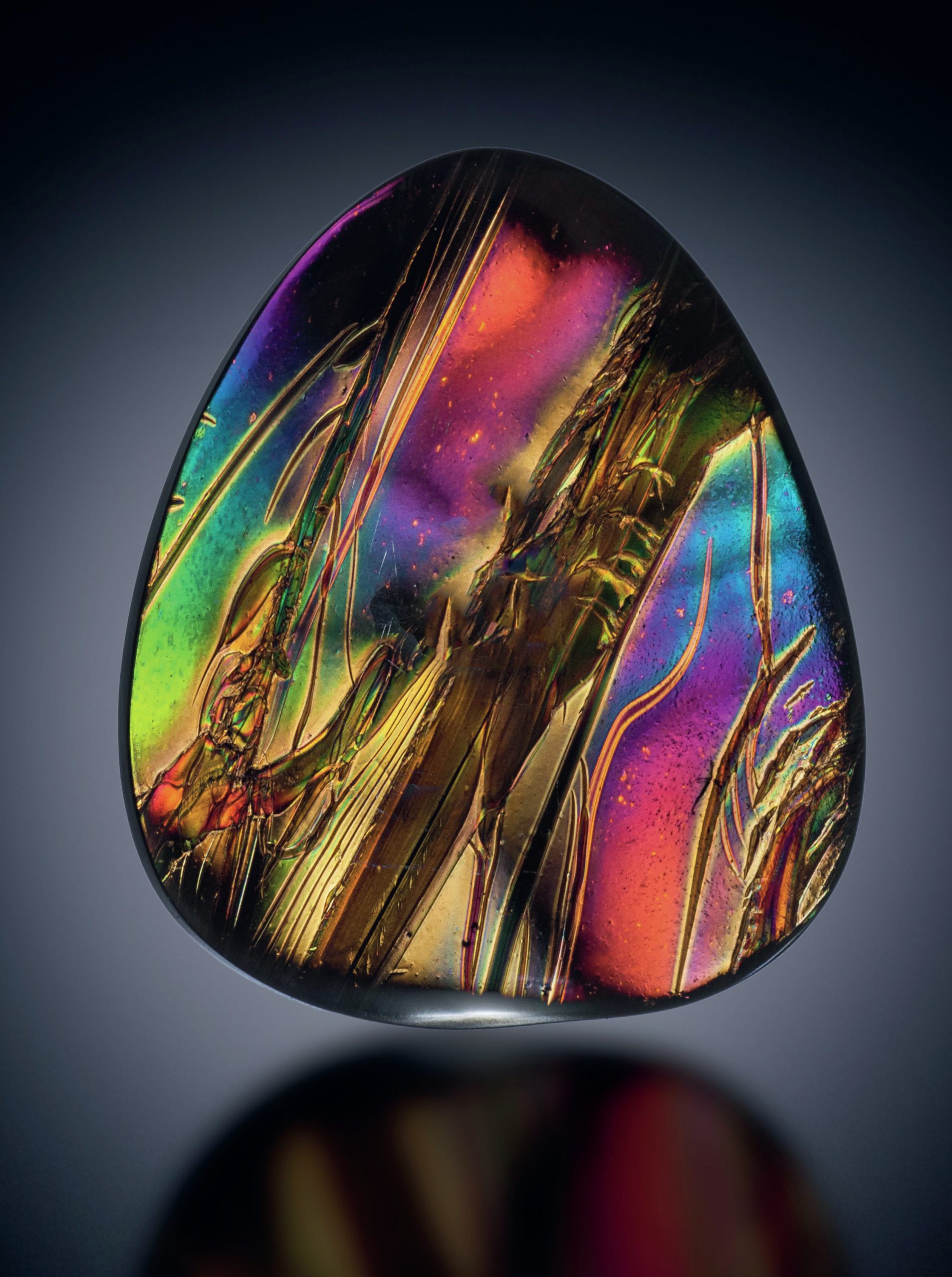
Iridescence is the ability of an object to display many colours when viewed from different angles. A spectacular example of this is fire obsidian, a rare type of volcanic glass found in 4–5 million-year-old volcanic deposits in Oregon, USA. It usually appears black, but when tilted in the light, vivid colours appear on the surface.
As fire obsidian is mostly glass, its composition is largely silicon dioxide (silica, SiO2), a compound noted for its giant covalent lattice structure (see Figure 1 and CHEMISTRY REVIEW Vol. 6, No. 3, pp. 20–22 and Vol. 16, No. 4, p. 22). So, what gives fire obsidian its characteristic iridescence?
Your organisation does not have access to this article.
Sign up today to give your students the edge they need to achieve their best grades with subject expertise
Subscribe




